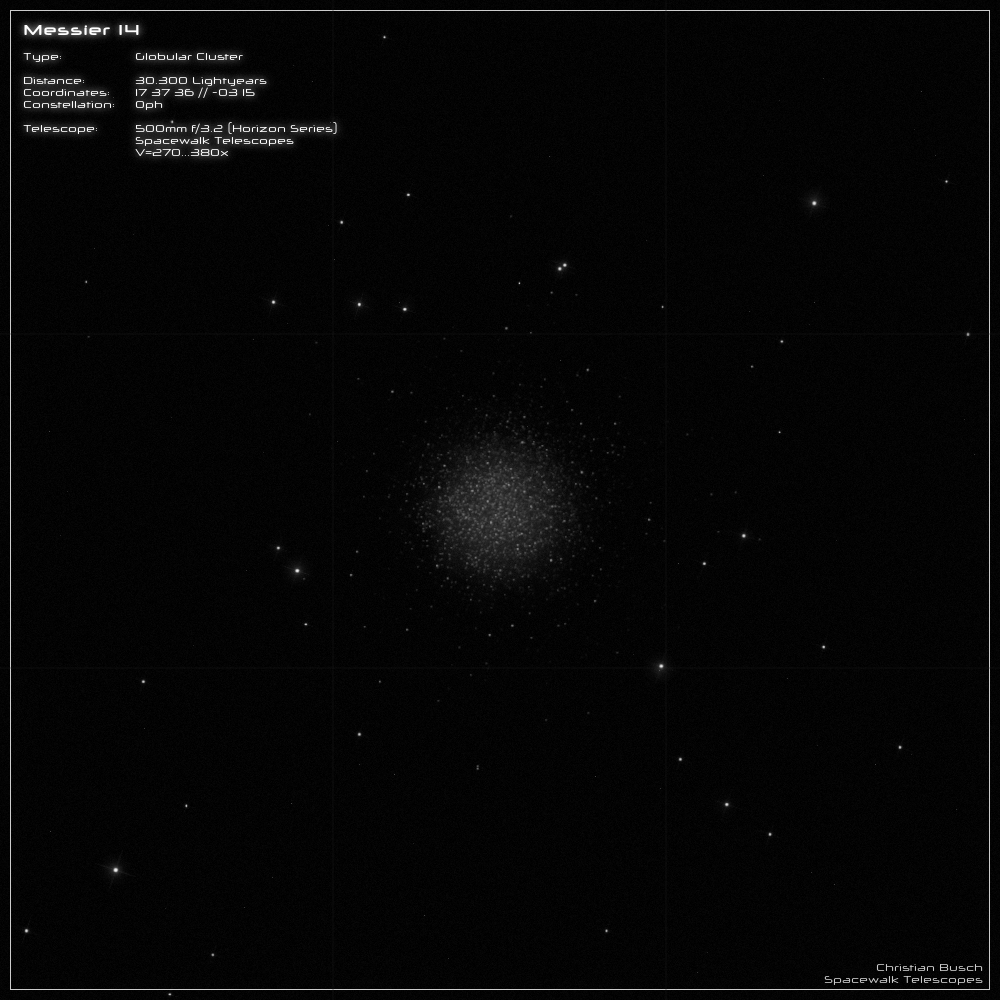Messier 14 - Globular Cluster
Messier 14 is a globular cluster with an apparent brightness of 7.9mag and an extent of 11 arcminutes, which can be found at a distance of around
30,000 light-years in the constellation of the Serpent Bearer (Ophiuchus). It was discovered in June 1774 by Charles Messier and was resolved into
individual stars as early as 1783 by F.W. Herschel.
This globular cluster is the faintest in the Messier catalog - it also has a very low surface brightness. This is mainly due to the fact that its brightness
is weakened by up to 2 magnitudes by some dust in front of it. The brightest individual stars therefore only reach around 14mag. The absolute
magnitude of Messier 14, on the other hand, is given as M= -9.1mag, which corresponds to a total luminosity of 400,000 suns.
The diameter of the slightly elongated cluster is around 100 light-years. Several hundred thousand stars with a total mass of around one million
solar masses can be found in this area.
----------------------------------------------------------------------------------------------------------------------------------------------
In my 20" telescope, Messier 14 offers a wonderful sight - assuming a dark sky. If the sky is brighter, the globular cluster appears poor in contrast.
At 270x you can see a large sphere, which is not quite as bright as the neighboring globular clusters Messier 10+12, but is still completely resolved
from the core to the edges. The central region is large and only slightly brighter than the outer regions. The cluster looks very three-dimensional.
The stars are more or less uniformly bright and have a brightness of 14mag. This makes it difficult to fully resolve the cluster in small telescopes.
Nevertheless, there are also some brighter stars towards the center.
All in all a beautiful object! :)

